Three flight diversions last week underscored the complexities of mid-Pacific travel, where emergency landing options are sparse. Each incident highlighted the unique challenges airlines face over open ocean, where quick decisions and strict protocols are essential.
Southwest Airlines flight diverts back to Honolulu mid-flight.
Previously unreported, on October 23, Southwest Airlines Flight SWA2173, bound for Phoenix, returned to Honolulu shortly after departure. Maggie, a visitor who reached out to Beat of Hawaii, shared that the flight turned back not long after takeoff, a detail later confirmed by FlightAware.
She noted that a male passenger was escorted off the aircraft upon landing. The flight subsequently resumed to its destination.
The specifics surrounding the diversion and passenger removal remain unconfirmed, but the incident has stirred interest among readers. Passenger-related Hawaii diversions typically suggest an onboard disturbance of some kind or a medical emergency.
American Airlines’ depressurization over Pacific: decision to return to Los Angeles, not Honolulu.
On the same day, an American Airlines Boeing 777-300, operating as AA Flight 73 from Los Angeles to Sydney encountered a pressurization warning roughly 420 nautical miles southwest of Los Angeles. Responding to an indication related to the cargo door, the crew descended to 8,000 feet and ultimately returned to Los Angeles.
Though the alert was later confirmed to be a false indication, the decision to turn back followed FAA guidelines, prioritizing the nearest suitable airport.
A number of you had mentioned to us whether or not the flight should have diverted to Hawaii. However, the distance returning to the west coast was far shorter than continuing to the islands. The FAA is investigating the incident to understand what occurred.
Southwest’s return to Kona: a flight cut short.
Also on October 23, as we reported previously, another Southwest flight, SWA1472 from Kona to Las Vegas, was forced to return to its departure point nearly halfway through its trans-Pacific journey. See Southwest’s Unexpected Return To Kona After 4 Hours.
The plane returned to Kona rather than continuing to the mainland. After spending time on the ground, the flight resumed, rerouted first to Oakland, then on to Las Vegas. We covered this incident in detail in our prior report, which prompted many visitor comments. However, it’s worth noting here as part of the diversions that took place last week.
More about Hawaii diversions.
These incidents add to a series of Hawaii-related diversions this year, highlighting the operational and safety complexities unique to Hawaii routes. With no diversion points over the vast 2,500-mile stretch between Hawaii and the mainland, flights rely on strict ETOPS (Extended-range Twin-engine Operational Performance Standards) and other protocols to ensure passenger safety during these extended over-ocean journeys.
While diversions remain uncommon, they underscore the unique challenges of Hawaii-bound flights. Each decision—whether to return to the mainland or to Hawaii—requires careful consideration of proximity, safety, and operational factors.
Having been through diversions multiple times on flights from and to Hawaii, this is always something in our minds, especially as we approach the half-way point of no return.
BOH Editors
These recent diversions serve as a reminder to all of us of the airlines’ careful planning and split-second decision-making involved that maintain safety on our remote Hawaii routes.
Get Breaking Hawaii Travel News

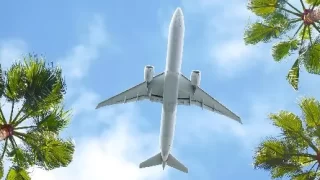
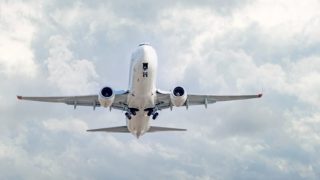

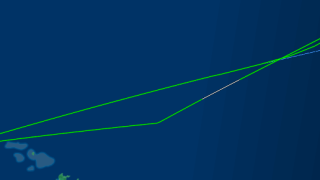
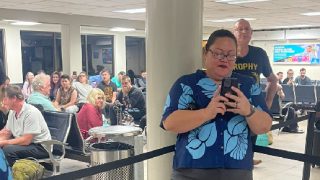
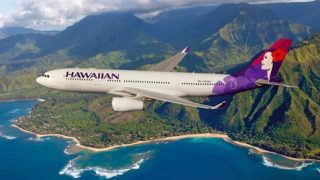
United Flight 1157 from HNL to LAX (777-200) was diverted yesterday too. The lights were flickering and were going on and off oddly. There was also a medical emergency and they called for medical help. My phone pinged with news that we were returning to HNL and a short time later, with not quite two hours of flight time behind us the Captain explained that there was an electrical issue. He said we were safe and were on auxillary power but as a precaution Chicago thought it best to return to Honolulu.
When we arrived back in Honolulu we were told to wait in the gate area. Updates came quickly – the Captain and First Officer were timing out and would not be able to continue even if the issue could be fixed. So they had to find 300ish people other flights. Our flight was packed but the later ones had space so it sounded like most were quickly rebooked (including us).
Re: the medical emergency I don’t know what was wrong but the young man was able to walk off with the paramedics.
He lost a IDG integrated drive generator. That’s why he started the APU. to power the other electrical bus. He had to divert. You can not do a 207 minute rule across the pond with a IDG out you can only do 180 minute rule. But to Hawaii and back requires 207 minute ETOPS rules. A IDG takes a while to change plus letting the engine to cool down .so that’s why it was cancelled
Thanks! Sounds like you know what you’re talking about. I’m just grateful we are safe.
I’m a retired airline avionics mechanic. Worked on 777 since 1999. It’s a very safe reliable airplane with backup systems
Could you please explain in layman’s terms what you wrote? I, like many people on this site, are not pilots, mechanics or engineers.
A critical piece of equipment failed in flight on the airframe. According to FAA rules, the flight could not continue to its destination without it & the time remaining to destination exceeded what is permitted. A prompt landing was necessary. It was quicker to go return than to continue forward for a required safe land.
Thank of the generator in your car failed . You would lose power to lights indicators etc etc. On the 777 it has two generators on each engine. And a generator on the apu . Plus two engine driven back up generators for back up on the fly by wire your flight controls. You have 2 electrical systems on airplane. So if one generator fails the other generator will pick up the system of the failed generator. That’s why the lights blinked. Start the apu the apu will now power the electrical system of the failed generator.for back up. So extended twin operations reguire both generators and apu generator to do the 207 minute rule. Since the flight was not at the point of no return it was closer to turn back to HNL then to go on to LAX
Quick note: I would never be upset if my flight was diverted due to a “possible” safety issue.